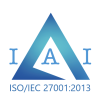In the current business environment, agility and efficiency stand as the cornerstones of success. Legacy applications with their dated technologies and architectures, impede organizations’ ability to swiftly respond to new market demands and maintain operational efficiency. This blog offers an in-depth look at legacy application modernization, highlighting its challenges, importance, and strategies for successful implementation.
Navigating Application Modernization Challenges
As organizations peel back their legacy systems’ layers, they uncover a sophisticated web of organizational, technical, and operational challenges. These issues must be dealt with precision and foresight to ensure a seamless transition to modern, scalable, and secure solutions. Here are some of the most common challenges encountered during the modernization process:
Technical Debt
It accumulates due to effective but short-sighted decisions in software development. Legacy systems carry a significant amount of technical debt. This includes dated code, undocumented software logic, and dependency on obsolete technology.
Security Vulnerabilities
It is possible that applications may not have been developed with modern security threats in mind, making them susceptible to a variety of security vulnerabilities. Catering to these challenges involves conducting security audits, implementing modern security practices, and upgrading authentication, encryption, and data protection mechanisms to meet current standards.
Integration complexities
Modernizing one part of an IT infrastructure can have ripple effects across other systems and processes. Successfully integrating modernized apps with the current ecosystems requires developing a clear integration strategy and utilizing API-led connectivity.
Organizational Resistance
Change can often be met with resistance from within the organization. The workforce used to the workflows in place may be hesitant to adopt new systems and processes. Overcoming this challenge can be daunting.
Aligning With Business Goals
Legacy application modernization efforts can lose direction if they are not closely in sync with the organizational objectives. Ensuring that technology upgrades enhance rather than hinder business performance requires strategic planning and continuous evaluation.
Strategies for Legacy App Modernization
Legacy application modernization is a strategic move toward improving business agility, security, and operational efficiency. It involves modernizing legacy systems into scalable and secure solutions that can adapt to changing business landscapes. This transition is vital to stay competitive, reduce costs, and improve customer experiences.
Successful modernization needs a systematic approach that is in line with the organizational goals and technological capabilities. Here are five key strategies for application modernization.
Rehosting: Migrating applications to new environments with minimum changes. Best for quick transitions.
Refactoring: Optimizing and cleaning up the code without changing the functionality. It improves performance and maintainability.
Replatforming: Moving apps to different platforms via some code adaptation. Helps in improving scalability.
Re-architecting: Designing the applications from scratch for modern standards. Supports comprehensive transformation.
Full replacement: Developing new systems from the ground up. It is done when legacy applications are beyond the modernization scope.
Benefits of Application Modernization
Modernization lays the foundation for future growth, innovation, and competitive advantage besides addressing the immediate inefficiencies and security concerns of outdated systems. Organizations can expect to experience these application modernization benefits through a successful implementation:
Enhanced Performance and Efficiency
One of the most immediate benefits of modernizing legacy applications is the dramatic improvement in performance and operational efficiency. These future-proof applications can process data quickly, handle increased user loads, and enable more responsive user experiences. This translates into faster responses and increased productivity.
Foolproof Security and Compliance
As cyber threats evolve, keeping business applications secure becomes increasingly challenging. Application modernization often includes incorporating the latest security technologies and practices to provide enhanced encryption and secure access controls to safeguard sensitive information. Updated applications also ensure compliance with the latest industry standards and regulations, mitigating legal and financial risks.
Scalability and Flexibility
Modern architectures like cloud-native designs and microservices, enable organizations to scale their applications more dynamically in response to fluctuating demands. Such flexibility is critical for adapting to market changes and accommodating growth. This helps in automatically adjusting resources to meet the evolving workload requirements. It also quickly deploys new features or services in response to business opportunities.
Resource and Cost Optimization
While application modernization requires an upfront investment, the long-term cost-related benefit can be substantial. By moving to the cloud or optimizing existing resources, organizations can minimize the need for physical hardware and associated maintenance and also streamline operations – reducing the cost and manpower required to manage manual tasks and legacy system upkeep.
Competitive Advantage
Probably, the biggest benefit of application modernization is the ability to innovate and maintain a competitive edge. Modernized applications can integrate with cutting-edge technologies with ease, enabling new product and service development and enriched customer experiences.
Cultural Shift
The app modernization process can also drive a cultural change within the organization. It helps promote a mindset of continuous improvement, agility, and innovation. This cultural transformation encourages cross-functional teams to work together more effectively. It also provides tools that enable the workforce to contribute more creatively to the organization’s success.
Legacy application modernization is essential to stay competitive in the digital era. By transforming outdated apps into modern, scalable, and secure solutions, organizations can unlock their systems’ real potential and drive growth. The modernization journey demands careful planning, strategic execution, and the right technological mix, ensuring that the applications are primed to combat today’s challenges and the dynamic business environment.
Read More: Maximizing Efficiency with Tailored Cloud Solutions
 We're Hiring
We're Hiring


